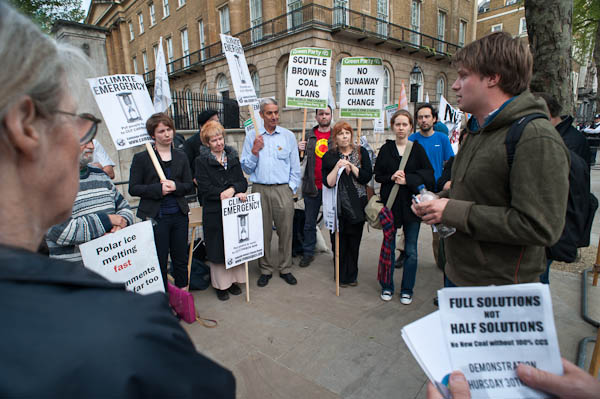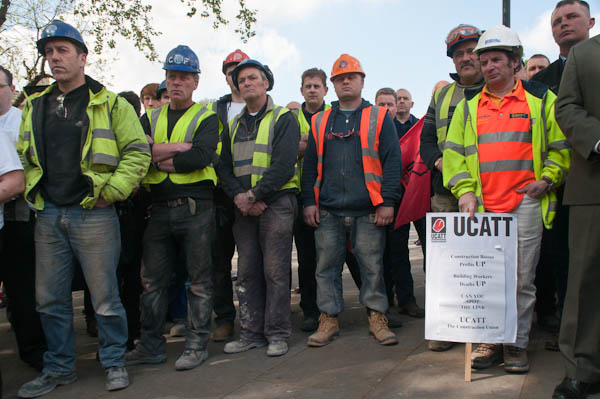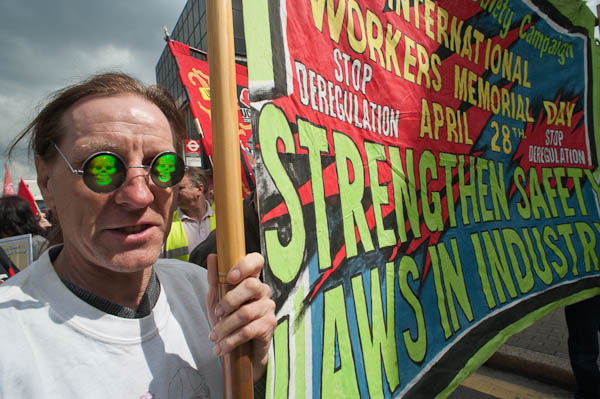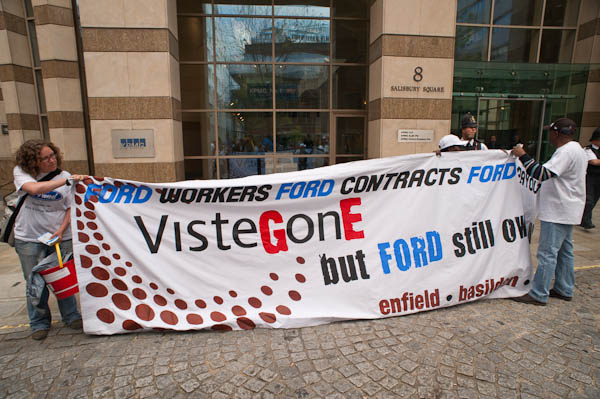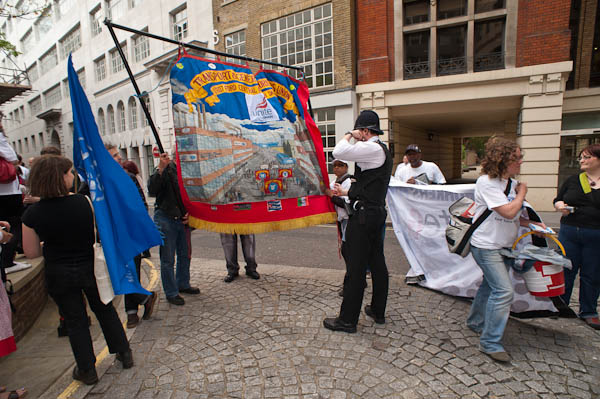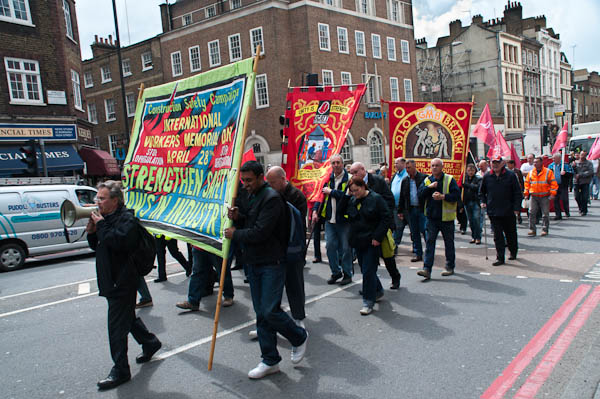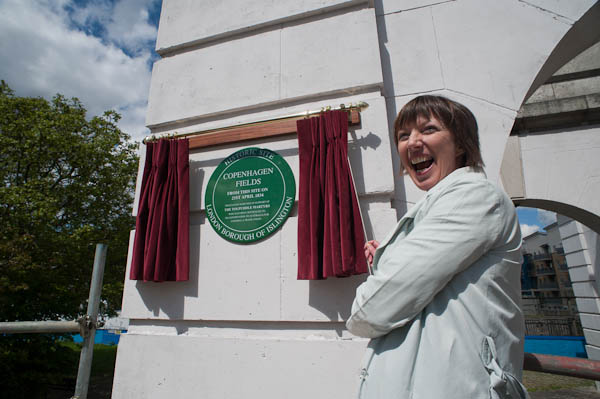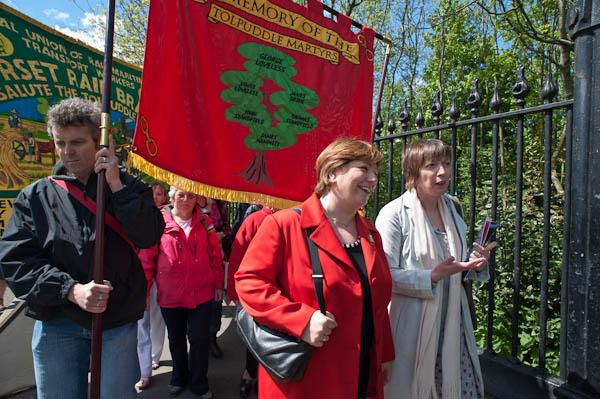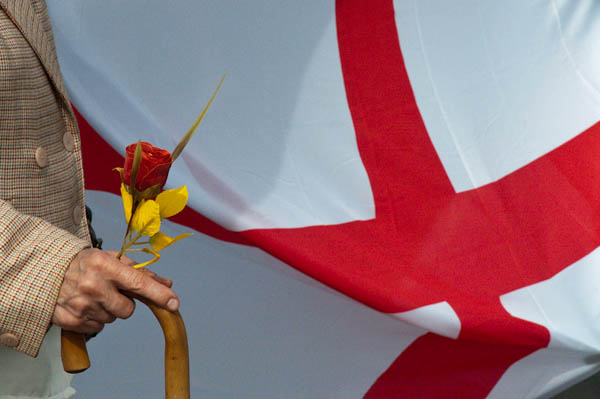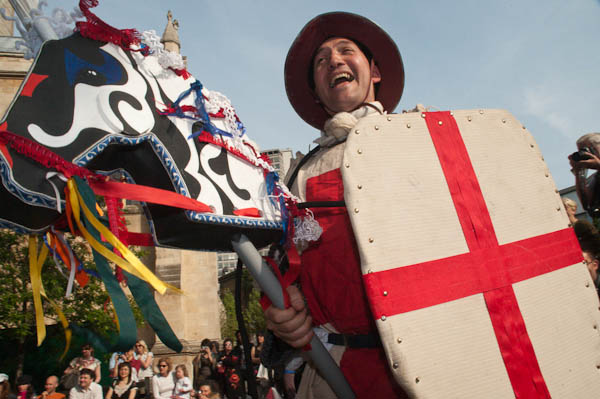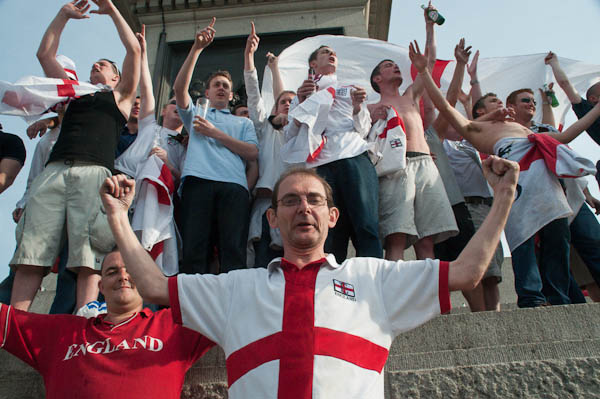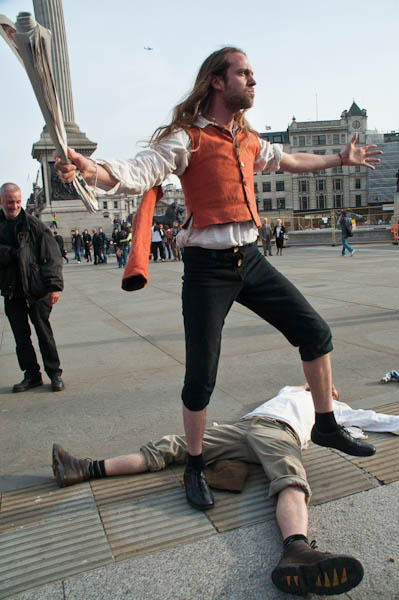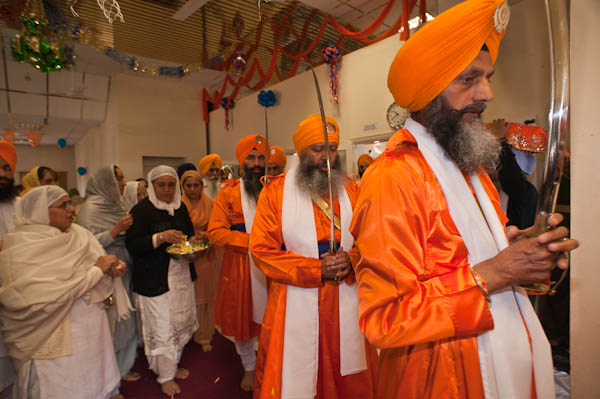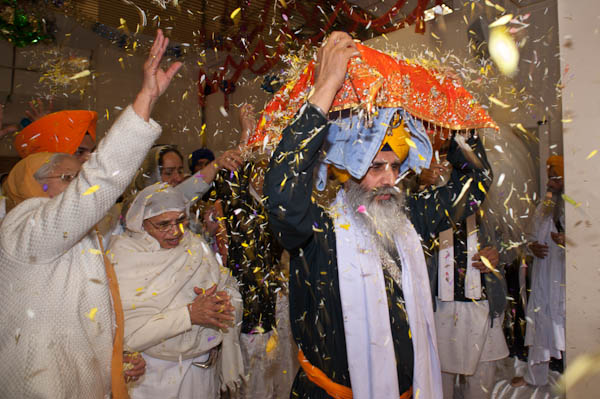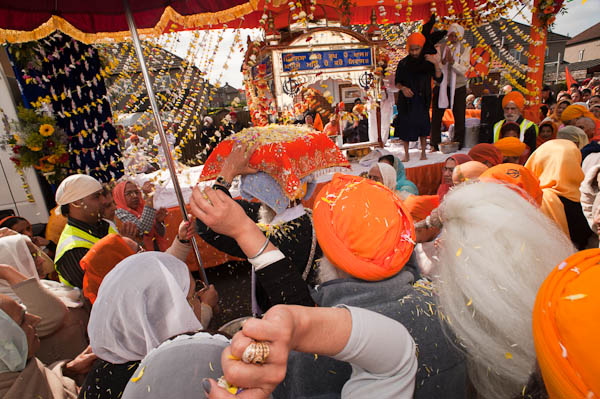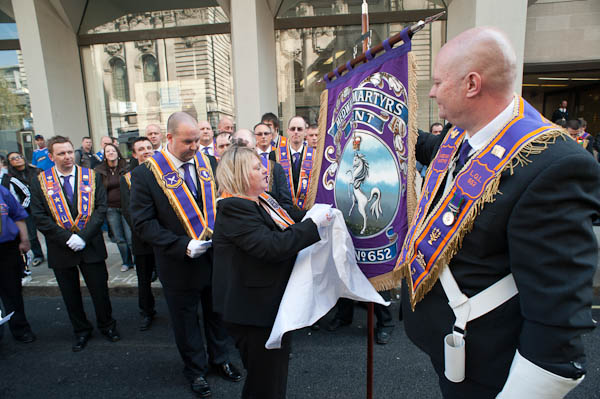Of course it’s only sensible that the lighting in art galleries is on the pictures, but it doesn’t make things easier when you are trying to photograph the people at an opening. There might be ways around this with some serious effort, but I hadn’t gone to the opening of Jiro Osuga‘s installation, Café Jiro, in the Flowers Gallery in Cork St, London, to take pictures, but to admire his incredible imagination and painting.
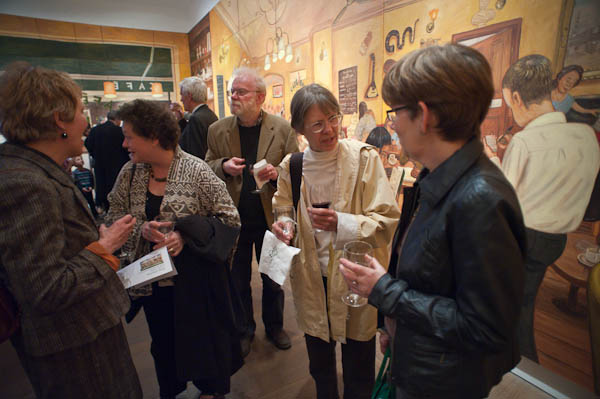
The lighting on the pictures gives a white balance at around 2300K (and around -6 magenta) so using flash to add a bit of light would really need a suitable filter to bring it from around 5600K. And there is a largish door and window at one end of the room with evening daylight at closer to 8000K. I’m travelling without my camera bag, just the D700 with a 20mm, and its built-in flash isn’t too great in any case, so though I take a few with it, most of the time I elect to work with available light at ISO 3200 and later adjust the lighting balance in Lightroom, burning the brightly lit painting on the walls and dodging the dimmer figures.

I discover you can even apply a little amber to the street outside the gallery to more or less neutralise the colour cast should you want too, but I quite like the mixed colour effect. The quality from the D700 at ISO 3200, which allows hand-held exposures at around 1/100, f3.5 in the fairly dim interior, is nothing short of amazing compared with the bad old days of film.
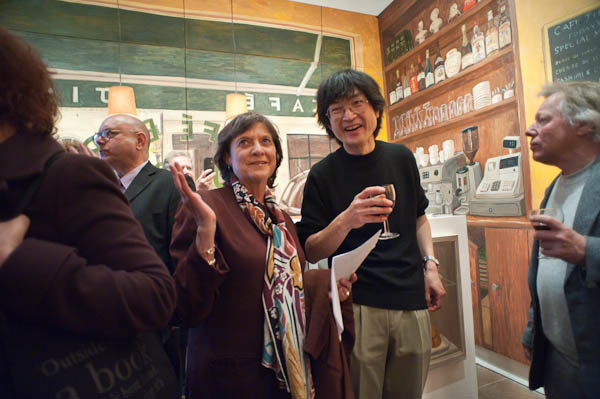
I’ve long been an admirer of Jiro’s work and have organised several group shows including some of his pictures, but in this show he has created something on a larger scale than before, re-creating the whole ground floor of the gallery as ‘Jiro’s Café’. The words ‘accessible’ and ‘fun’ can seldom be attached to shows in this most famous of Mayfair gallery streets in London, but this show is certainly both, and also a powerful showcase of the intelligence and vision that Jiro’s work always displays, applied to a much larger canvas, or rather series of canvases.
The large area around the room took seven months to paint in the artist’s studio, where he could only see and work on it a canvas at a time, and it must have been a considerable relief to see it altogether for the first time in the gallery when the show was hung and find it all fitted together perfectly.
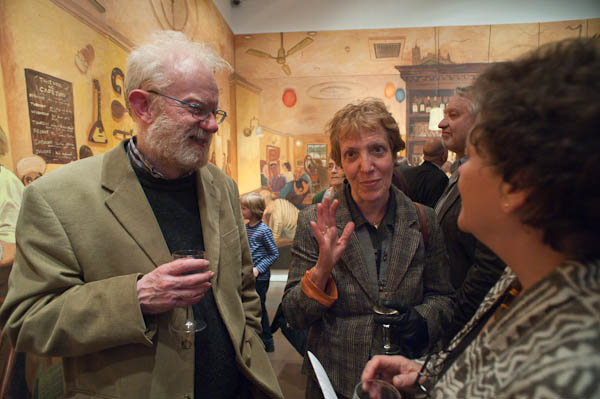
My pictures concentrate on the people at the opening – and particularly on friends of mine who were there – including the artist.
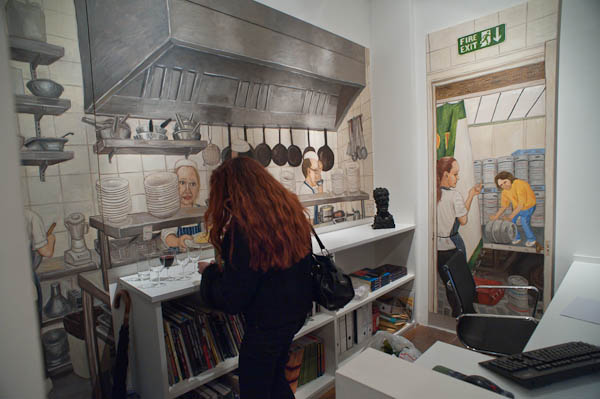
A few of those in my photographs are also in the paintings, particularly the gallery staff who can be found in the kitchen. Y0u can see 19 panels on the Flowers Gallery web site
which includes most of the display except the topmost level, but you really need to get to Cork St and see it as a whole to appreciate it as an ensemble and the relationships between the parts. In the basement gallery there are also other some smaller paintings by Jiro (and some other gallery artists) in the downstairs area.
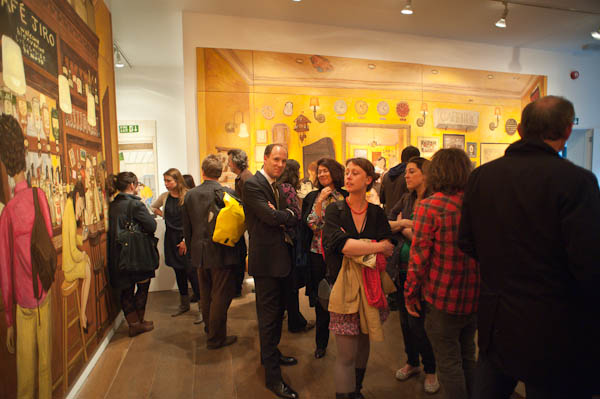
Although it contains some references to the original site for which it was designed – such as the windows on the front wall which are those of the street opposite, it is a work that would stand on its own and could be shown in galleries and museums elsewhere, and I hope others around the world will get an opportunity to see it.
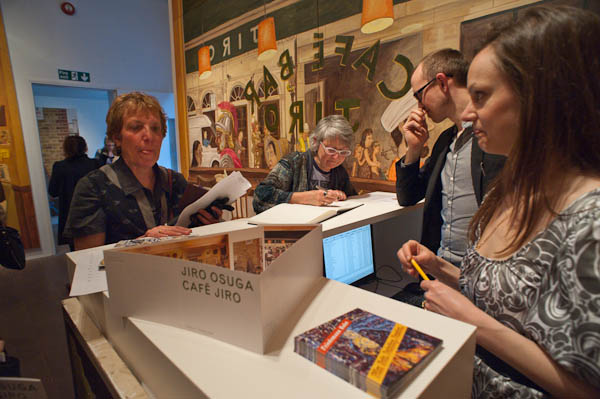
At the gallery you can buy a nicely illustrated catalogue for a tenner and also a one metre long thin card showing all the paintings that make up Café Jiro at a quid, including the panels in the doorway showing a dog tied to the café’s sandwich board. In my photograph he is being photographed by his owner and his head is clearly visible on the screen of her camera in a larger image. Hidden behind her head is the painted wheel of Jiro’s bicycle.
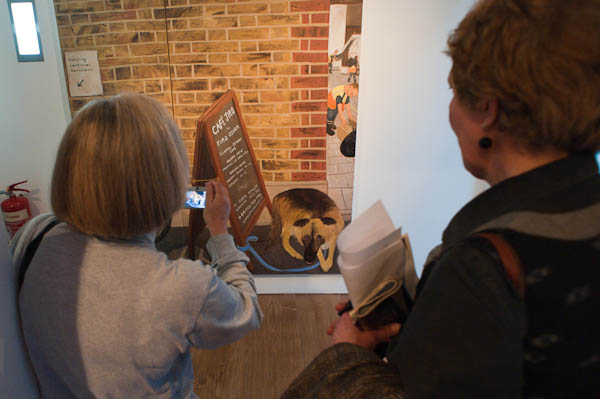
Don’t miss it. The show continues until May 23, 2009.
